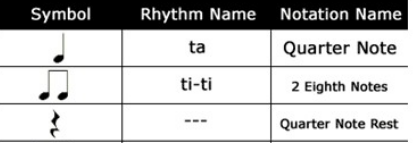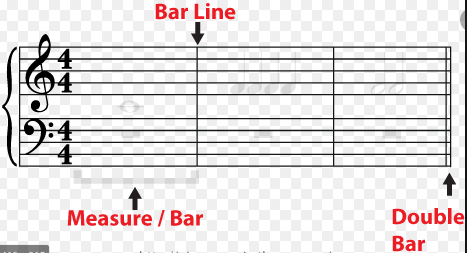Learning Menu 7
Hi Grade 2’s! What Music activity will you try this week?
Don’t forget to do the response so I know which one you tried. There are levels this week in the learning column. What one can you get too?
Click here to see this week’s activities.
Hang in there!
Mrs. Nordstrand
Learning Menu 6
Hi Grade 2’s! What Music activity will you try this week?
Don’t forget to do the response so I know which one you tried!
Click here to see this week’s activities.
Hang in there!
Mrs. Nordstrand
Learning Menu 5
Hi Grade 2’s! I’m missing you and thinking of you! What Music activity will you try this week?
Don’t forget to do the response so I know which one you tried!
It’s week 5 of your learning menus! Click here to see this week’s activities.
Hang in there!
Mrs. Nordstrand
Activity 6 (week of May 11)
Hello everyone,
For Mrs. Nordstrand’s Menu click here. Did you see the video I made for the community?
Below are items from Mme. Hesketh.
Before you begin, please review the hand signs and solfa names of the 5 note (pentatonic scale) here and review singing these notes along with this video of the do pentatonic scale here
Click here for a learning menu from Mme. Hesketh. Choose one or more to try out.
Don’t forget to send your response (picture, video, worksheet etc.) and send to your music teacher.
Have fun!
Materials:
Click here for the sheet music for “Peace like a River” from “Actively Listen”
Peace Like a River (lyrics)
I’ve got peace like a river,
I’ve got peace like a river,
I’ve got peace like a river in my soul. (repeat)
I’ve got joy like a fountain…
I’ve got love like the ocean…
–Pentatonic composition worksheet from”Experiment and Create” here
_______________________________________________________________________________________
Activity 5 (week of May 4)
Hello everyone,
Click here for a learning menu from Mrs. Nordstrand
Below are items for Mme Hesketh’s menu.
I hope you had a great week. Here are some more activities for you to try out.
Click here for a music learning menu from Ms. Hesketh. Choose one or more to try out.
Don’t forget to send your response (picture, video, worksheet etc.) and send to your music teacher.
Have fun!
Materials:
____________________________________________________________________
Activity 4
Hello everyone, I hope you had a good week.
Click here for a music learning from Mrs. Nordstrand.
Make sure to send your entry to Mrs. Nordstrand for our special Music Monday project!
Click here for a music learning menu from Ms. Hesketh. Choose one or more to try out.
Here is the recording for the “practice” activity
Here is the worksheet for the “practice” activity.
Here is the answer key to the “practice”activity.
Don’t forget to send your response (picture, video, worksheet etc.) and/or fill in the form from Ms. Nordstrand and send to your music teacher.
Have fun!
____________________________________
Activity 3
Click here for a learning Menu from Mrs. Nordstrand. Choose one or as many as you wish to do on the menu!
Here is a response sheet you can use!
_________________________________________________________________________________________
Activity 3 from Ms. Hesketh
Don’t worry be happy!
Here is a great video to get you in a music-loving mood!
Click here to watch!
Hello!
Hello grade 2’s! Did you have fun dancing in 3/4 time? Did you feel the “down..up..up” of the music?
Did you notice that it was more obvious in some songs than others?
What is 3/4 time again?
When we say 3/4 time or 4/4 time we are talking about the “metre” of the music. The metre is basically the measurement of groups of beats into musical bars (not to be confused with chocolate bars;) You can hear a pattern because the first beat of the group- or bar- is stronger or accented a little bit.
**Fun fact: The first beat in the group of beats is actually called the down beat, just like how we felt the “down…up…up” in the music! In the video link below, the teacher also refers to the first beat of each bar as the “strong beat” or the “accented” beat.
So how do we show 3/4 time in written music?
To show what metre the music is in we need..
1: A time signature:
A time signature has 2 numbers.
The one on top shows the number of beats per bar (in this case it is 3 beats per bar), and the one on the bottom show what kind of note the rhythm is in.
For now, the bottom number will be 4 (which means a quarter note) but we’ll talk more about this later.
2: Bars and bar lines
We also need to put in “bars” and “barlines” to divide the music into the groups of beats. So if you are in 3/4 time, you need a bar line every 3 beats .
Bar lines are suuuu-per important. If we didn’t have them, the music would be really confusing to count.
So… Musical “bars” are divided by “bar lines”.
Here are 3 bars separated by 2 bar lines with a double bar line at the end (don’t worry about this one for now, it just means the piece is over):
Actively listening/ watching
Here is a little video explaining it again in another way. Watch until minute 1:30. If you want to continue watching after 1:30, please do, but don’t worry if it what he says afterwards doesn’t make sense quite yet- we’ll learn about it soon!
Click here to watch
Conclusion:
So in the songs from last week you heard a pattern of beats: 1..2..3, 1..2..3 over and over again.
The pattern is divided by “bar lines”
The bar lines separate the “bars”
The “metre” is written at the beginning like this below and tells you the number of beats in each group. The number of beats in the group doesn’t change unless the metre says so. Here we have 4/4 time which is 4 beats per bar instead of 3.
graphic. Here is that picture again:
And…The first beat of each group of beats is a little bit stronger, and we call it the “down beat, the strong beat, or the downbeat”.
Active listening/review:
Have a watch to this video again and see if it makes a little more sense now. https://www.youtube.com/watch?v=GJRItpXDizA
Experiment and create:
Go back to the songs in 3/4 time from last week’s lesson and try to dance in 3/4 time again now that you understand metre. This time instead of just dancing as down..up..up, try to accent the “downbeat” or “strong beats” with your movements in other ways.
What kind of movements did you discover? (Think back to our freeze dances for inspiration.)
Try moving in 3/4 time like
-Animals
-With qualities (sticky, bubbly, sharp, round etc.)
Click below for the links again from last week:
the metre is not as obvious in these ones…
Share
Take a video of your dancing with your new moves and send to your music teacher by email with your full name and division in the title.
Happy dancing!
_________________________________________________________________________________________
Activity 2
Did you find the first activity on the Week One page?
Hello fabulous grade 2’s! Here is a little recording that I (Ms. Hesketh) made just to say hi!
I have missed your beautiful singing but we are strong and we can adapt right? Can you guess what is an even better way to beat cabin fever than exercise? Right! Exercising with music… and dancing!!
In these next lessons we are going to work on feeling 3/4 time *three four time, (or three beats per bar). This is the “metre” of the music. If you’re not sure what it sounds like, think of a dance you might know that goes “down..up..up” like a waltz. To listen to an example and to check how it is different from 4/4 time *four four time, (or four beats per bar) listen and watch here
Active listening:
A) Can you hear the “down..up..up” in the music? It’s kind of like the first beat is heavy and the next two are light. That is what 3/4 time feels like when we dance: heavy light light.
Here are some actual waltzes (a dance with steps that go “down up up, down up up”, you can imagine dancing down…up..up
B) Here are more examples of songs in 3/4 time, but the metre is not as obvious, can you hear the down.. up.. up? Play them…
Practice: Now play a few of these examples again and move around the room any way you like in 3/4 time. The trick now is to keep the “down..up..up” beats in your movements nice and steady.
Share: Ask someone in your home to take a video of you dancing in 3/4 time to the music and send it to your music teacher by email with your full name and division in the title!
Happy dancing!
Video and activity from Mrs. Nordstrand
Click here for a video from your teacher
_________________________________________________________________________________________


